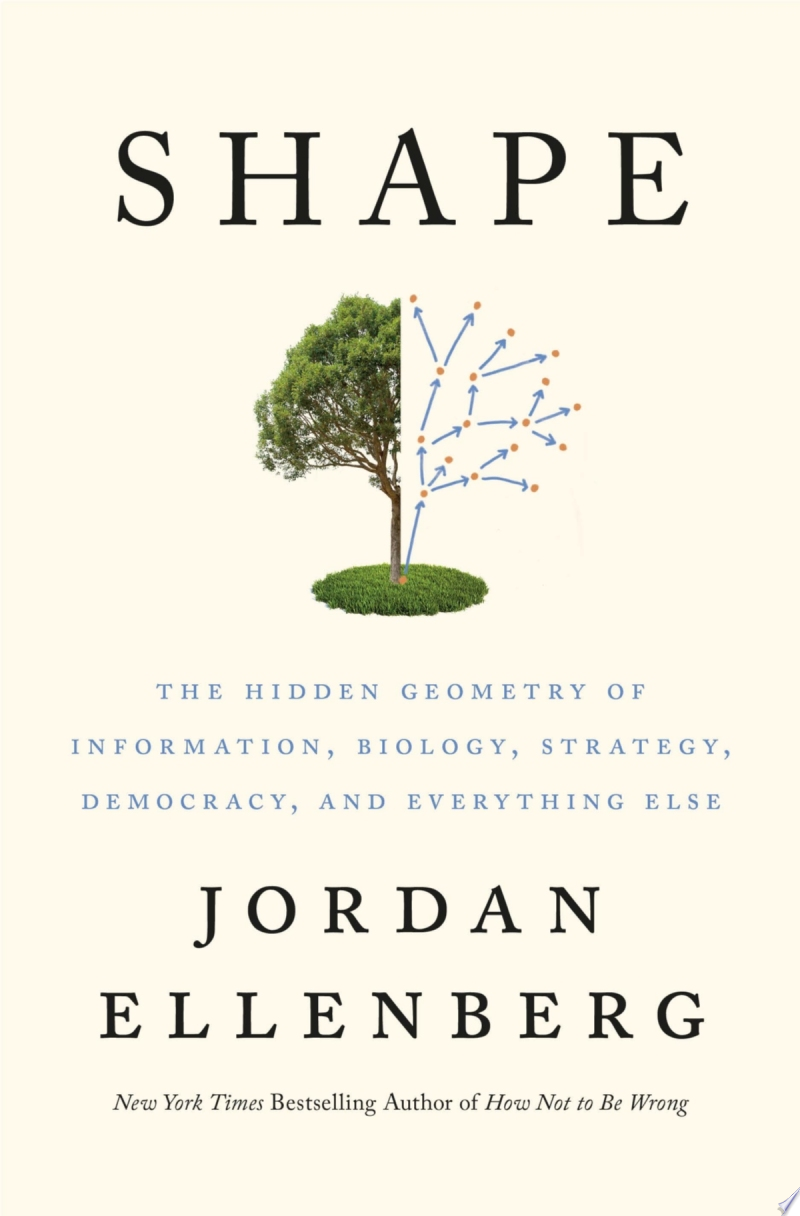Menu
- About
- Categories
Categories

Shape: The Hidden Geometry of Information, Biology, Strategy, Democracy, and Everything Else

Next in the queue
57
/100
I Index Overall Rating

Readers
Critics
Scholars
N/A
Author:
Jordan Ellenberg
Publisher:
Penguin Press
Date:
May 25, 2021
How should a democracy choose its representatives? How can you stop a pandemic from sweeping the world? How do computers learn to play Go, and why is learning Go so much easier for them than learning to read a sentence? Can ancient Greek proportions predict the stock market? (Sorry, no.) What should your kids learn in school if they really want to learn to think? All these are questions about geometry. For real. If you're like most people, geometry is a sterile and dimly remembered exercise you gladly left behind in the dust of ninth grade, along with your braces and active romantic interest in pop singers. If you recall any of it, it's plodding through a series of miniscule steps only to prove some fact about triangles that was obvious to you in the first place. That's not geometry. Okay, it is geometry, but only a tiny part, which has as much to do with geometry in all its flush modern richness as conjugating a verb has to do with a great novel. Shape reveals the geometry underneath some of the most important scientific, political, and philosophical problems we face.
What The Reviewers Say
Parul Sehgal,
The New York Times Book Review
The New York Times Book Review
... unreasonably entertaining.
Matt Parker,
The New York Times Book Review
The New York Times Book Review
To Ellenberg, geometry is like poetry: able to mold and delight the human mind. But it is also deeply practical — poetry you can use to build houses. Art, then, as well as science: With geometry you can have your cake and cut it into symmetric pieces too.
Kirkus
Ellenberg introduces readers to a bevy of relatable mathematical concepts.














